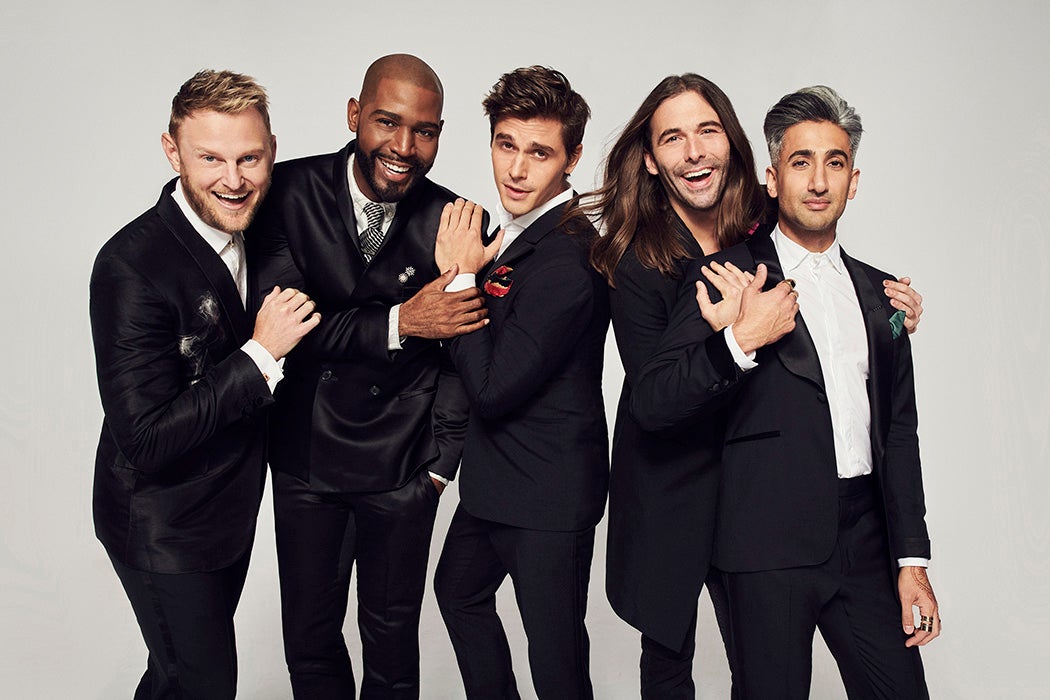Fifteen years ago, more than a decade before the Supreme Court ruling to allow same-sex marriage, Bravo debuted Queer Eye for the Straight Guy. The show combined reality television with home decoration and personal makeovers. And it was a network hit, running for five years. Netflix’s latest update on the show, called simply Queer Eye, is updated and rebooted for 2018.
Just a year after Queer Eye for the Straight Guy debuted in 2003, scholar James Keller analyzed the show’s budding popularity, arguing that the concepts of the “queer eye,” “queer gaze,” and “queer leer” give the show a political subtext, thanks to the show’s successful appropriation of power for the queer community.
Keller posits that Queer Eye for the Straight Guy “seems more provocative” than contemporaneous popular productions featuring gay and lesbian characters, such as Will & Grace (coincidentally also rebooting), Queer as Folk, and Six Feet Under. The provocative nature lies in the “potentially inflammatory title [that] invokes the taboo subject of gay men’s intrusive, unsettling, and objectifying gaze.”
Keller supports his theory with Laura Mulvey’s concept of the “male gaze” and Mark Simpson’s concept of the “queering of the camera.” Keller argues that in Queer Eye for the Straight Guy, “the television audience’s gaze is aligned entirely with the perceptions of the gay men.” The Fab 5, as the team is called in both iterations, come into the straight man’s life, re-making his home, fashion, hygiene, and food. In the final segment of the show, they watch on pins and needles as the male subject is released on his own to prepare for his makeover reveal. As he showers, gets dressed, and sets the ambiance, The Fab 5 narrate his actions, judging and affirming him as he gets ready.
During this final segment, “[t]he audience is focused on the straight male’s sex appeal, his worthiness of romance. Thus the metaphor of the queer camera is literalized. Regardless of the sexual orientation of the audience, the viewers become gay for fifteen minutes, following the movements of the camera.”
In this sense, the original show was groundbreaking. Instead of merely enforcing stereotypes, the “queer eye” of the title invites viewers to share a more humanistic and empathetic viewpoint. By identifying with the Fab 5, viewers participate in the show as they watch. Keller analyzes this as an important moment, referencing Jonathan Dollimore’s concept of “strategies of inclusion, a practice of social compromise whereby marginalized viewpoints gain access to the mechanisms of power.”
Though the Fab 5 team has changed and the show has been updated for 2018, it still encourages the show’s participants, families, friends, significant others, and most importantly, the viewers at home, to observe one another from a novel point of view.







